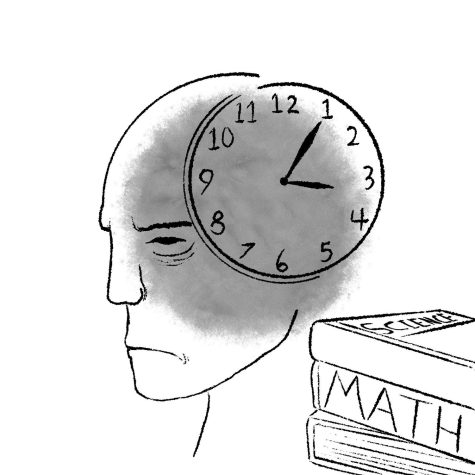
I started packing up my stuff, grabbed my phone from the “phone jail,” and anxiously waited for the bell to ring, signaling the end of the school day. My whole class slowly started to file toward the door. When the clock finally hit 3:40 p.m. and the final bell dinged, everyone ran out of the classroom. While walking down the street, I heard a middle-aged man say to his wife, “These kids get out at 4! That is so bizarre to me.” At that moment, I realized how late school now ends. “
How could we change this?” I thought to myself. The solution is straightforward: cutting down 90-minute class periods and setting a more organized class schedule. Ensuring school ends no later than 3:15 p.m. will give students time to fulfill their routine of schoolwork along with other important daily habits.
With California Bill SB-328 signed by Governor Gavin Newsom in 2019, schools throughout the state are mandated to start at 8:30 a.m. rather than 8 a.m. Following the passing of the bill, the Tamalpais Union High School District (TUHSD) implemented the later start time during the 2021-2022 school year. However, this new schedule came with extended block periods – increased from 75 to 90 minutes – and thus, pushed back the dismissal time from 3:15 to 3:40 p.m. on Wednesdays and Fridays. With Redwood having this bill in effect for two years, it is time for a change for the 2023-2024 school year.
School boards in California initially signed bill SB-328 due to national studies showing that sleep-deprived teenagers benefit from more sleep and a later start time in the morning. However, according to a study conducted in 2021 by researchers at the University of Minnesota, students who are ages five through 11 increased their grade point averages by a modest 0.1 points when their school district started 45 minutes later than usual. The researchers categorized the sleep benefits as “large,” but the academic improvements were considered “small.” Therefore, even with school starting later, it did not yield major educational benefits.
Moreover, the harmful effects of extending the school day far outweigh the benefits. Before the bill was enacted in 2019, most high schoolers had extra free time to help participate in after-school activities. Today, due to the lack of free time after school, students have had to limit their activities to ensure adequate time for their school work.
In addition, after-school sports programs, classes and practices start later and end later, often finishing at 6 p.m., in the dark. When students return home from these activities and eat dinner, they need more time and energy to focus on homework, one of the under-the-radar repercussions of longer school days. For me, juggling work, school and extracurricular responsibilities has been stress-inducing. Upper-classmen are trying to navigate preparing for college by working on applications and simultaneously focusing on schoolwork, all while handling extracurricular activities and other aspects of their lives. If school ended earlier, high school students would have the opportunity to use their “work” time wisely and enjoy more free time to lower their stress levels, something that they don’t have today.
According to award-winning teacher Melissa Taylor, longer school days can additionally impact teachers negatively.
“Extended school days mean teachers will be required to work longer hours, or additional teachers must be hired to work the extra time. Teachers’ unions have expressed that they do not want to work longer hours,” Taylor said to Parenting Magazine in 2012.
Although the rationale for delaying the start time seemed optimistic, doing so has had many unintended negative consequences. It has made the school schedule much more complex than before.
Therefore, TUHSD schools should start at the same time, 8:30 a.m., but reduce block periods by five minutes and have school end at 3:15 p.m. daily. On Mondays, the schedule would stay the same as the 45-minute periods that are already in place have proven to be effective. Since the state government requires high schools in California to meet the threshold of 64,000 minutes of school time per year, Redwood should reduce vacation time to fill that void – a tactic that several East Coast schools have already implemented.
The block periods that are currently in place are strenuous; cutting them down to 75 minutes per class, and returning to the old schedule before the COVID-19 pandemic will be in the best interest of students, teachers, and parents. The old schedule had fewer block days and students were released earlier. Leaders of school districts and boards of education must realize that the current schedule leads to added stress and less productivity for students, and adapt the hours to ensure these difficulties are avoided.







